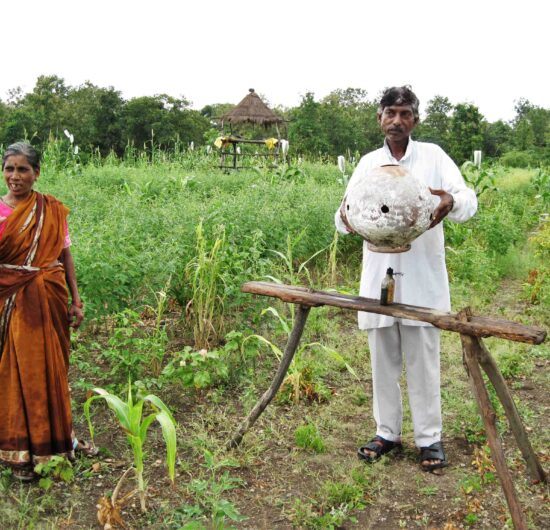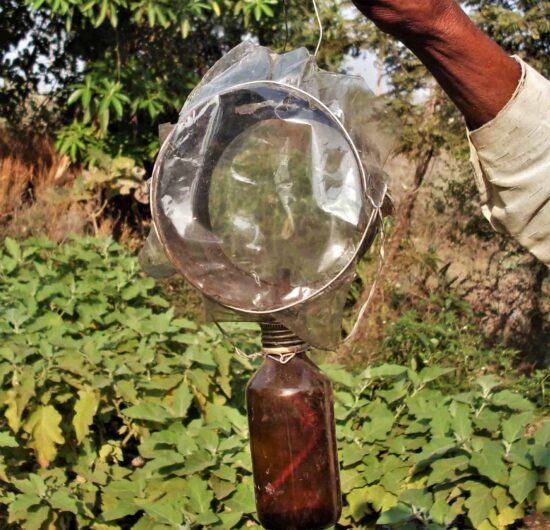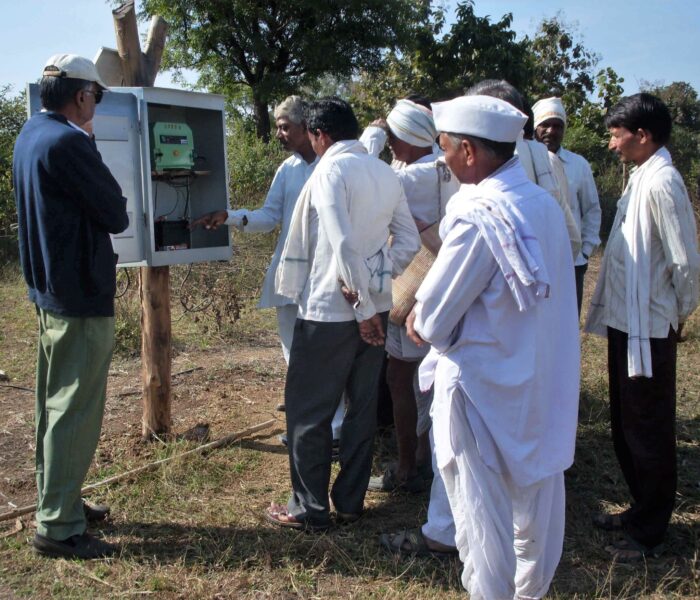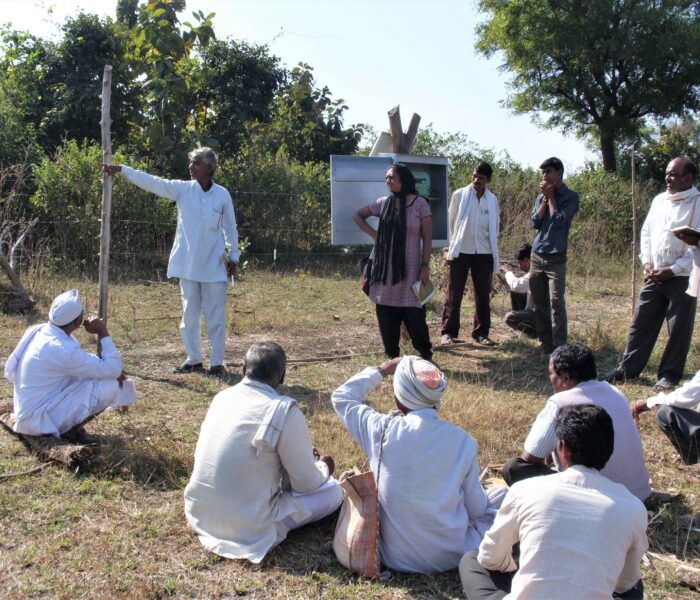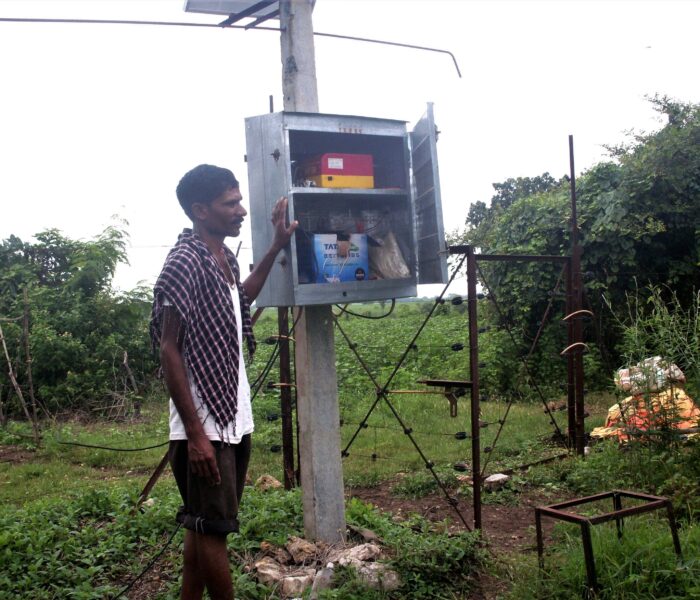Crops in fields are severely damaged by both stray domestic cattle and wild animals. The damage due to wild animals is a huge burden for farmers almost all over India. The wild animals being faced by the farmers are – Wild Boars, Blue-Bulls, Monkeys, Rabbits, peacocks, parrots. Our in-depth survey of farmers in the Wardha district of Maharashtra has revealed that even for fields that are not located near forests, the losses amount to an average of about Rs 6,000 per acre per year!
This is unbearable for an already threatened agrarian sector. No wonder then that it has also added to farmers’ woes, making it an indirect abettor of farmer suicides.
SECURING LIVES & LIVLIHOOD
In our search for appropriate measures, our experiments were wide-ranging. It also included green and live fences with multipurpose diverse species of plants. Few traditional methodologies and low-cost technologies were also tried out. Several of these measures worked only partially.
Finally, our search yielded results: a solar electric fence.

Our experience of replicated trials and monitoring of the first 24 months, post-installation, showed that:
- It is very effective and efficient.
- It is up to 95 percent fault-free.
- It is easy to maintain as the maintenance process takes only 30 minutes per day.
- It’s affordable.
Here are the capital costs for fences with steel posts:
- 15-acre field: About Rs. 1,10,000
- 10-acre field: About Rs. 90,000
- 5-acre field: About Rs. 60,000
- Recurring cost: Rs 3,000 per acre per year (including interest, depreciation, maintenance etc)
However, if local wood or bamboo is used as fence posts, the cost can be brought down further.
The durability of material used:
- Wires, accessories – Two to four years
- Steel-posts – 10 to 20 years
- Wood or bamboo-posts – Two to five years
- The cost is recovered 100 per cent within a year or two.
- It is totally harmless.
- Villagers can be trained as village technicians, who can provide and fix it, install it and facilitate on a turn-key basis for farmers.
ACHIEVEMENTS
Pioneering demos are set up in different fields in nine villages spread out in two districts of Vidarbha, on 182 acres of 26 farmers. We have also set up three at our Resource Centre with three different materials. Seven villagers have been trained as village technicians.
Within one year (2015-16), the net benefit accrued was about Rs. 2 million, with an average of Rs. 12,000 per acre (including paid and unpaid costs and losses). This is on a per-year basis. The biggest accomplishment of solar fences is that farmers’ families can now sleep peacefully without the fear or anxiety of their crops being attacked by wild animals.

Research & Innovations
A study of types and quantum of losses caused by wild animals revealed that even dryland farmers lose on an average about 175 kg grain (or cash crop produce), incur extra expenses, labour all summing up to Rs.27,000 per hectare per year.
Optimization for low-cost, appropriate-technology-model (about Rs.20 to 25 thousand per hectare). Innovations in package and model of “Village Technicians”.
Future Plans
- Further optimization of material, methods and persons as Village Technicians. Consultation & collaboration with other technical resource agencies.
- Working on measures to extend the durability of the low-cost material.
- Keeping the trained Village Technicians updated and ever-ready for backup services for solar fences.
- Exploring possibilities of funds for more units.
- Working for a model to make more use of local material like wooden poles or bamboo for posts.
- Thorough documentation for at least 3 years of impact studies.
- Publication, articles, papers etc. There’s scope for further innovation and research and development in this area.
We need to upscale to more number of farmers, especially to those who are following alternative models of sustainable eco-farming


